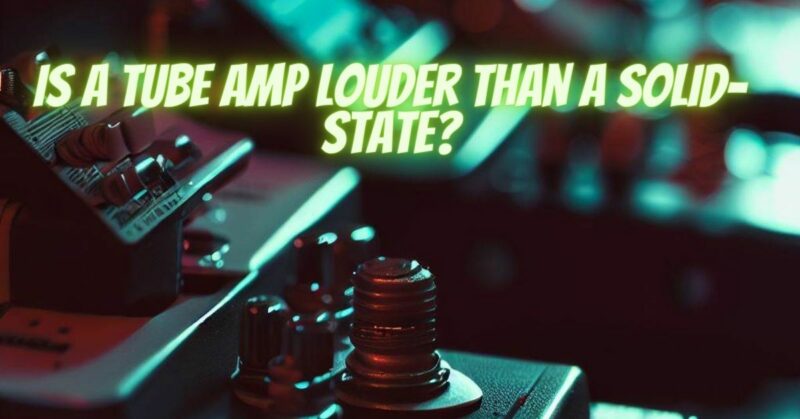The debate between tube amps and solid-state amps has been a cornerstone of audio discussions for decades. One of the questions that frequently arises is whether a tube amp produces more volume compared to a solid-state amp. This article delves into the intricacies of volume production in both types of amplifiers, examining how they handle power, distortion, and overall sound output.
Understanding Tube Amps and Solid-State Amps:
Tube amplifiers, also known as valve amplifiers, use vacuum tubes to amplify audio signals. Solid-state amplifiers, on the other hand, rely on transistors and other solid-state components for amplification. Each type brings its own sonic characteristics and performance attributes to the table.
Power Handling and Volume:
In terms of raw power output, solid-state amplifiers often have an advantage over tube amps. Solid-state technology allows for efficient power delivery, enabling higher wattage ratings and subsequently higher volume levels. This means that, all else being equal, a solid-state amp can generally produce more volume than a tube amp of the same wattage.
Distortion and the Perception of Volume:
While solid-state amps can deliver higher power and volume levels, the perception of volume isn’t solely determined by wattage. The unique distortion characteristics of tube amps play a significant role in how we perceive volume.
Tube amps tend to produce harmonic distortion as they approach their maximum power output. This type of distortion is often considered more pleasant to the ears and is associated with a warmer and smoother tone. As a result, tube amps can reach their “sweet spot” of distortion at lower volume levels, giving the impression of being louder and fuller even when they might not be pushing as much raw wattage.
Solid-state amps, on the other hand, can exhibit harsher and more abrupt clipping when driven to their limits. This type of distortion might not be as pleasing, and it can sound “clipped” or “squared off” compared to the more gradual and musical distortion of tube amps. This can make solid-state amps sound harsher at high volumes, even if they are technically producing more power.
Dynamic Range and Headroom:
Another factor to consider is the dynamic range and headroom of the amplifiers. Tube amps often have a smoother and more forgiving clipping behavior when pushed to their limits, which provides more headroom and dynamic range. This means that even though a tube amp might appear to distort earlier, it can still handle transient peaks without sacrificing too much of the original sound quality.
Solid-state amps, while capable of delivering higher wattage and volume, might clip more abruptly when pushed, leading to a narrower dynamic range and potentially less forgiving behavior with quick transients.
In the realm of audio, volume isn’t solely about wattage ratings. The interaction between power handling, distortion characteristics, and the overall sonic profile of an amplifier contributes to how we perceive volume. While solid-state amps generally have the capability to produce more raw volume, the nuanced distortion characteristics of tube amps can make them appear louder and more pleasing to the ear at lower levels. The choice between tube and solid-state amplifiers ultimately depends on your sonic preferences, intended use, and how you prioritize factors like distortion and power handling in your audio experience.


